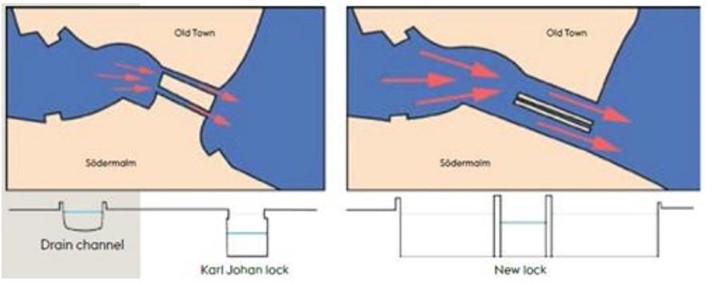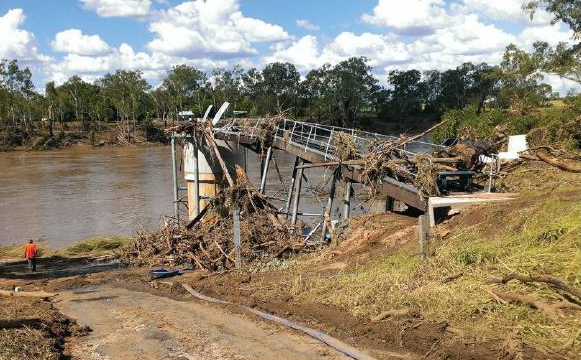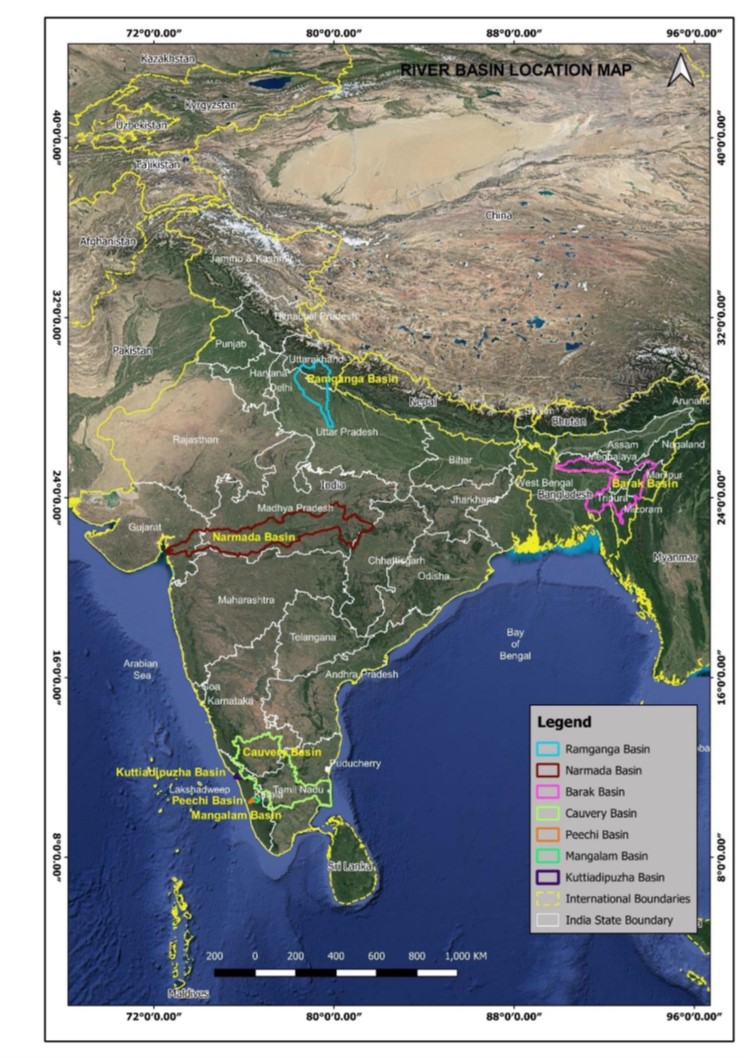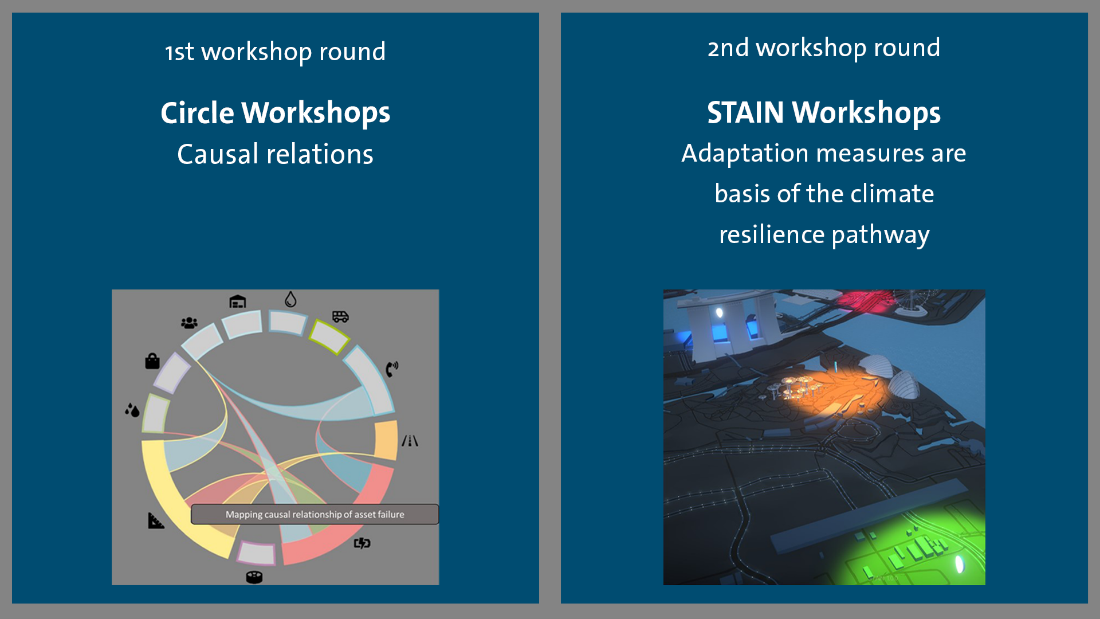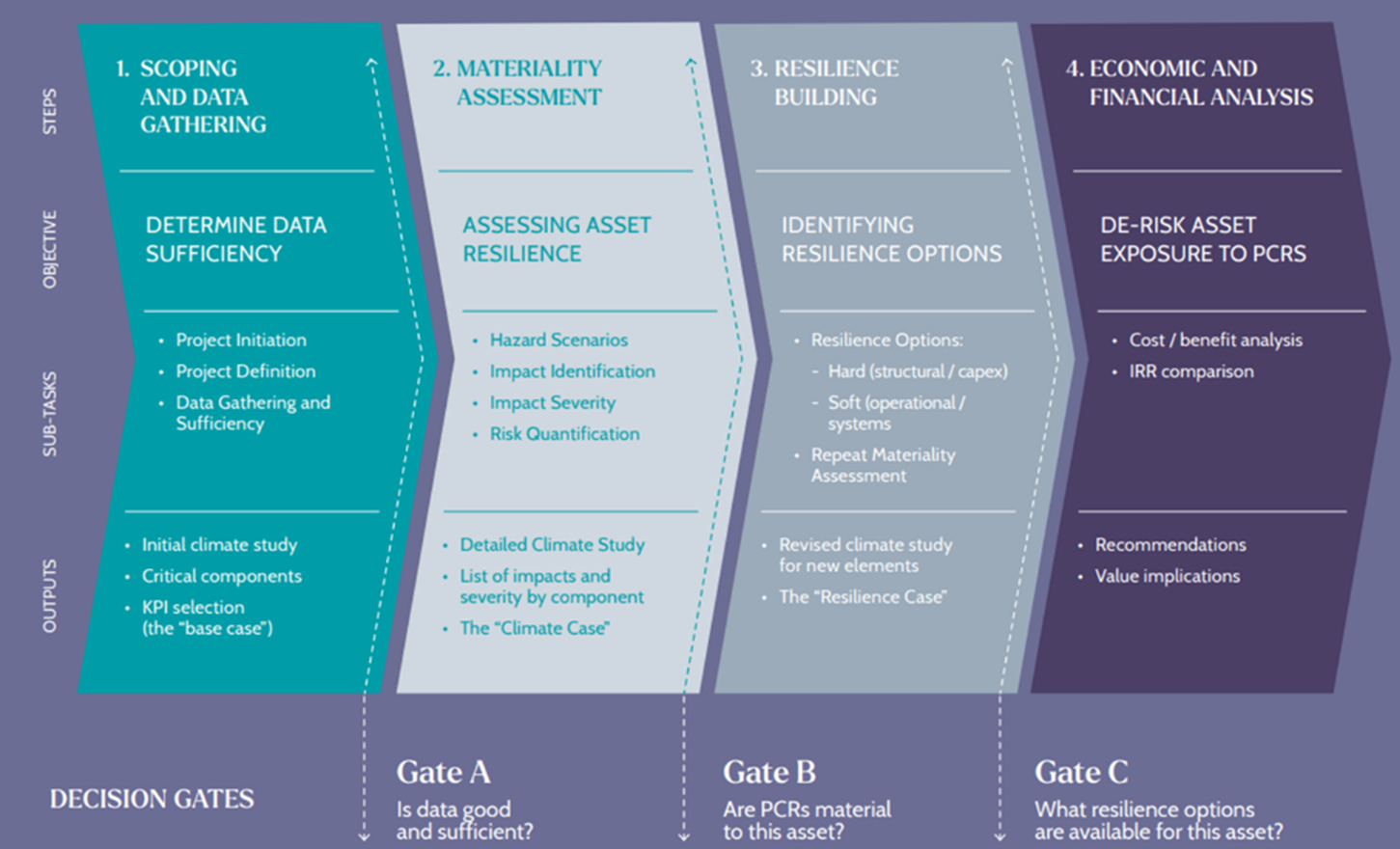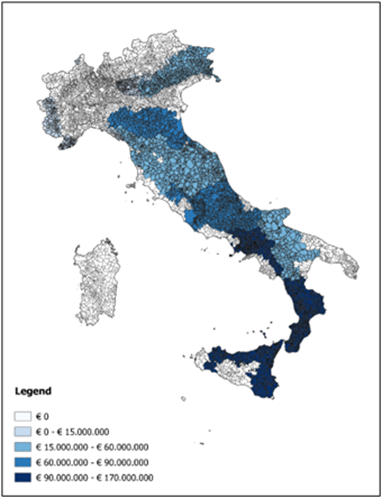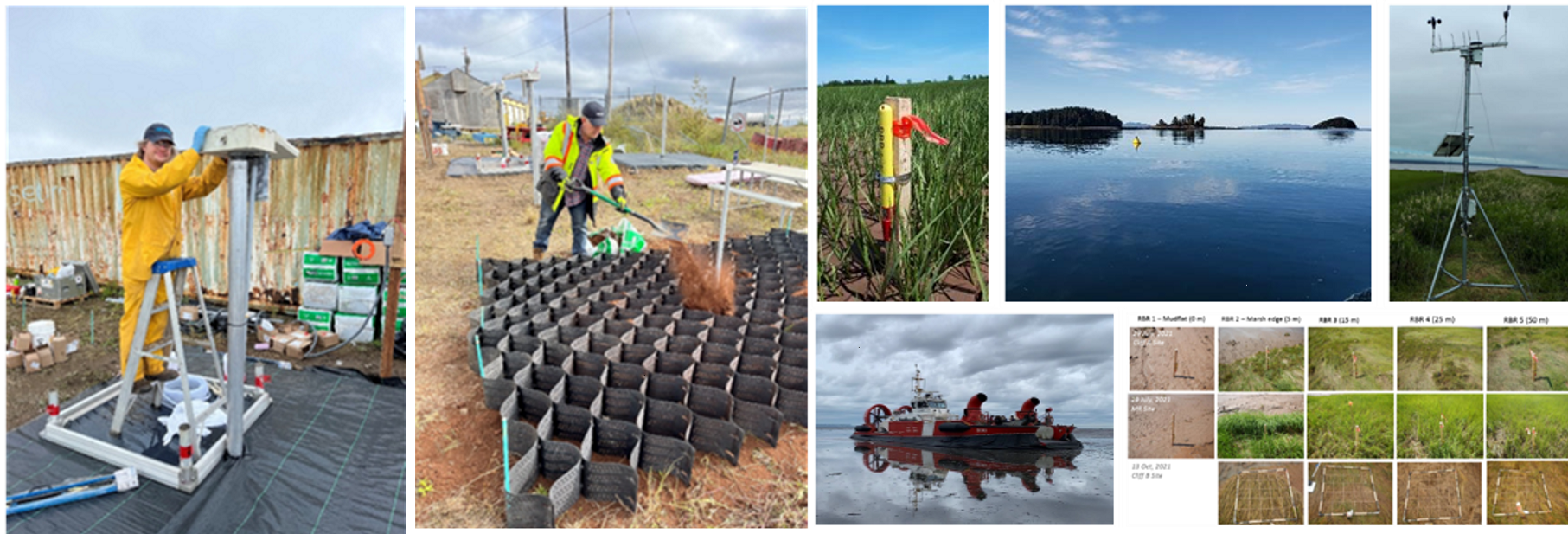The project construction started in 2016 and is expected to be completed in 2025. By enlarging the channels around the lock, the New Slussen will be capable to release nearly five times more water from Lake Mälaren to the sea (up to 1400 m³/s). Accompanied by a new water regulation plan for the lake and responsive hydrological monitoring and forecasting, this will reduce flood risk in Stockholm and the surrounding region.
The New Slussen will be able to withstand the following risks:
- 1-in-10,000-year inflow of freshwater into the lake (e.g., from extreme rainfall and rapid snow melt), combined with mean sea level rise in Baltic Sea by 2100
- a 1-in-300-year event of maximum high tide position in the Baltic Sea, combined with the highest projected sea level rise in 100 years.
In addition, New Slussen will ensure the provision of clean drinking water for around 2 million people around the lake, by preventing inundation and saltwater intrusion from the sea. With the redesign of the accompanying transport infrastructure, the project also aims to increase public transport traffic by 26%, double cycling and pedestrian traffic, while reducing car traffic by 33% by 2030. Furthermore, it will create new green spaces for commercial and leisure purposes for the benefit of locals and visitors, while allowing the lake to become more “natural” and strengthening of ecosystems in the surrounding NATURA 2000 sites.
The following difficulties were identified in course of planning and implementation of the project:
- While planning authorities consulted on the need to refurbish the lock since 1991, proposed plans often met public contestation.
- Several legal battles, delays and subsequent cost increases have affected the project.
- Disruption to transport services: At the start of construction, close to half a million people used the transport node of Slussen every day. To ensure transport remains operational during the whole project, the construction is carried out in phases.
- Uncertainty around future climate change: Climate flexibility was factored into design by building “oversized” foundations, that can support higher flood gates, if necessary, from 2050 onwards.








